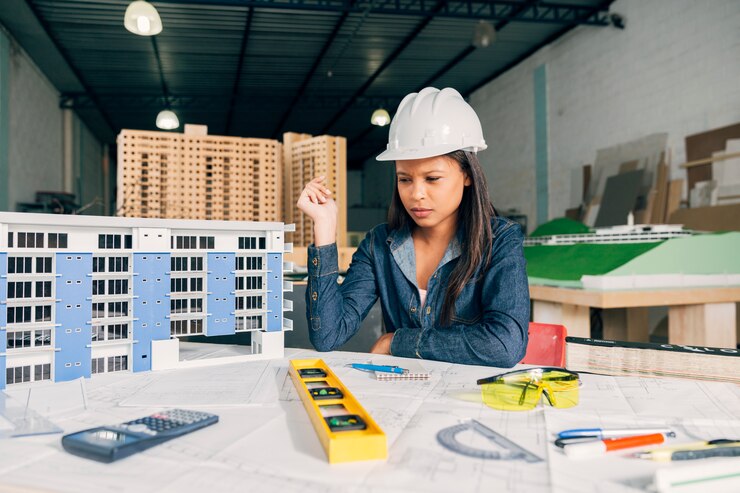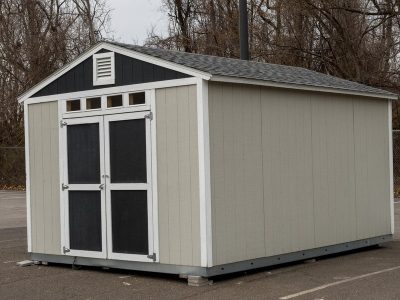A Comprehensive Guide To Optimal Construction Material Selection

In the expansive realm of construction, where every nail, beam, and slab holds the promise of a structure, the choice of materials stands as a pivotal determinant. It’s akin to an orchestra, where each instrument, each element, must harmonize seamlessly to create a symphony of stability, aesthetics, and longevity.
This comprehensive guide unveils the secrets of selecting the right construction materials – a roadmap to navigate through the labyrinth of options and emerge with a masterpiece.
Decoding Project Needs
Embarking on a construction project without understanding its unique needs is akin to setting sail without a compass. The first and foremost step is to grasp the intricacies and peculiarities of the venture. One must meticulously analyze the project specifications, objectives, environmental factors, and most importantly, the budget. Is it a residential abode or a towering commercial space? Does it face the relentless sun or the battering storms? The materials selected should align seamlessly with the project’s purpose, environment, and the aesthetics desired.
The Vast Landscape of Construction Materials
1. The Rock-Solid World of Concrete and Masonry
Concrete, the bedrock of construction, stands as a testament to human engineering. Versatile and robust, it’s the canvas upon which structures are painted. Bricks and blocks, part of the masonry family, bring their own brand of durability and strength to the construction tableau. The endurance of these materials in the face of time and elements is their hallmark.
2. Wood and Timber – Nature’s Gift
Wood, the timeless artist, and timber, the scaffolding soldier, come together to grace constructions with their natural beauty and innate strength. From framing to intricate finishings, they are versatile, resonating with a touch of nature. Timber, especially, forms the skeleton upon which a structure finds its form.
3. Metal – Forging Strength and Form
Steel and aluminum, the metallic marvels, bring their unique strengths to bear. Steel, the titan, upholds skyscrapers and monumental structures, while aluminum, the featherweight champion, finds its place where every ounce of weight matters.
4. The Rise of Plastics and Composites
Plastic and composite materials, the new kids on the block, weave innovation into construction. They offer a lightweight alternative, often with enhanced durability. Not only do they present a lighter solution, but they also resonate with sustainability.
5. Sustainability Redefined
In an era where environmental consciousness is paramount, sustainable materials come to the forefront. Bamboo, recycled steel, and eco-friendly alternatives are gaining prominence. Sustainability is not just a buzzword; it’s a responsibility. A structure should be a haven, not a burden on the Earth.
6. Winnipeg Fir Plywood – A Symphony in Wood
Amongst the vast array of woods, winnipeg fir plywood emerges as a virtuoso. Strong, stable, and versatile, it brings its unique melody to the construction orchestra. This particular wood, celebrated for its quality and durability, finds its way into numerous construction projects.
The Material Matrix: Factors to Consider

a. The Endurance Test: Durability and Longevity
Materials should endure, standing strong against the relentless passage of time. They should stand tall, unyielding to the years. A structure’s endurance begins with the materials that shape it. Durability and longevity are the cornerstones of successful material selection.
b. The Monetary Maze: Cost and Budget
In the labyrinth of budgets and costs, one wrong turn can lead to financial woes. Balance is key. Quality materials that don’t break the bank should be the goal. It’s a delicate dance between quality and cost-effectiveness.
c. The Maintenance Dilemma
Some materials demand attention, and a touch of care to last a lifetime. Others are more forgiving. Choose wisely, for maintenance is the price of longevity. Understanding the maintenance needs of materials is pivotal for long-term cost assessment.
d. Echoes of Our Footprint: Environmental Impact
A project’s legacy isn’t just in its architecture but in its environmental footprint. Opt for materials that sing an eco-friendly melody, leaving a positive mark. The selection of materials should echo a commitment to a greener, sustainable future.
Related: 7 Paths Your Business Can Take Towards Environmental Responsibility
e. Proximity Matters: Local Availability and Accessibility
In the construction tale, proximity plays a significant role. Local materials not only support the community but also ease logistics, keeping the project on course. The accessibility and availability of materials should be considered, impacting both costs and sustainability.
Navigating the Maze: Tips for Material Selection
- Expert Counsel: In the symphony of construction, conductors are indispensable. Seek advice from architects, engineers, or seasoned builders. Their wisdom guides the composition. Expert opinions can shed light on the pros and cons of each material, aiding informed decisions.
- Quality Trump Savings: The allure of cost savings can be tempting, but not at the cost of quality. A penny saved today may cost a fortune in the future. Invest in quality materials; they form the foundation of a durable and reliable structure.
- Adaptation to Habitat: Materials should be a product of their environment. Consider the local climate and surroundings. A material out of sync with its habitat may falter. Understanding the environmental impact and suitability of materials in a given context is crucial.
- A Taste of the Future: Stay updated with the latest tunes in the construction world. Innovation may offer solutions that redefine what’s possible. New materials or advancements in existing ones can provide more sustainable, cost-effective, or durable options.
Tales of Triumph: Case Studies
Case Study 1: Sydney Opera House – A Ceramic Symphony
The Sydney Opera House, a testament to architectural prowess, showcases the beauty of precast concrete panels and ceramic tiles. The right materials orchestrated an icon. Precast concrete and ceramic tiles were chosen not just for their aesthetics but also their durability, a testament to their successful selection.
Case Study 2: The Burj Khalifa – Steeling the Skies
The Burj Khalifa’s towering success owes much to the strength of steel and the durability of reinforced concrete. The right composition brought it closer to the sky. Steel and reinforced concrete were pivotal in enabling the Burj Khalifa to reach such extraordinary heights, ensuring both structural stability and durability.
In Concert: A Harmonious Conclusion
In the grand construction symphony, every instrument matters. Each material is a note, and the composition determines the success. The right selection of materials is a melodious journey. Choose materials like the versatile Winnipeg fir plywood, and let your project resonate with success. Let your structure be a testament to the beauty of intelligent material selection. In the end, every nail, every beam, and every selection should create not just a structure, but a masterpiece. Happy building!
Material selection in construction is an art and a science. It’s a careful blend of aesthetics, durability, sustainability, and budget. The right choice of materials can make a significant difference in the success of a project. From concrete to wood, metals to composites, each material has its unique characteristics and applications.
Understanding these properties and aligning them with the project’s requirements is crucial. So, choose wisely, and let your construction project resonate with the perfect harmony of well-chosen materials. Choose wisely, and let your structure be a masterpiece, a testament to the beauty of intelligent material selection. Happy building!
Read Also:
























